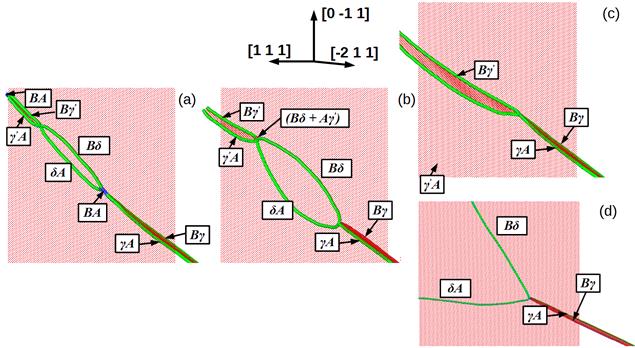Séminaire Maxime Dupraz - 16 Novembre 2018- Large scale 3D atomistic simulations of dislocation interactions with bicrystalline interfaces during multiaxial loading
Invitation : Olivier Thomas (Equipe MNO).
Diffusion : IM2NP, CiNaM, Irphe, LP3, Madirel (via P. Boulet), PIIM (via T. Angot), CPT (T. Martin), Fédération de Chimie (via S. Viel)
SEMINAIRE Vendredi 16 novembre 2018 à 11h00
Salle des séminaires de l'Im2np, campus de Saint-Jérôme, aile 1, niveau 6 service 161
Maxime Dupraz
Paul Scherrer Institut, Swiss Light Source, SYN-PEM, Villigen, CH-5232, Switzerland
Large scale 3D atomistic simulations of dislocation interactions with bicrystalline interfaces during multiaxial loading
Maxime Dupraz1*, Satish I. Rao2, William A. Curtin3, Helena Van Swygenhoven1,4
1 Paul Scherrer Institut, Swiss Light Source, SYN-PEM, Villigen, CH-5232, Switzerland.
2 Materials Directorate, Air Force Research Laboratory, WPAFB, Ohio 45433, USA.
3 École Polytechnique Fédérale de Lausanne (EPFL), LAMM, Lausanne, CH-1015, Switzerland.
It is well established that the mechanical properties of polycrystalline materials depend on the interaction between lattice dislocations and grain boundaries (GBs). However, in spite of extensive numerical and experimental studies, the mechanisms behind these interactions are not yet fully understood. To study these complex interaction mechanisms, we recently performed large scale 3D Molecular Dynamics simulations of a screw dislocation interacting with Coherent Twin Boundaries, in a range of face-centered cubic metallic bicrystals modeled with atom method (EAM) potentials. It was shown that both the reaction mechanism and reaction stress strongly depends on the chosen potential, even for a given material, and significantly differ from the results reported in quasi-2D simulations. Following these first results, we extended this study on two fronts. First, we evaluated the impact of the boundary structure on the interaction mechanism and on the critical stress for transmission, by considering the case of Incoherent Twin Boundaries (ITB) containing ledges. Second, we investigated the influence of complex loading conditions on the GB-dislocation interactions. In particular we simulated intergranular interaction by applying shear stress on the bicrystal, and performed multiaxial loading tests with different load ratios.
Overall, these results highlight the importance of directly modeling the slip transfer reactions using full 3D-models.

